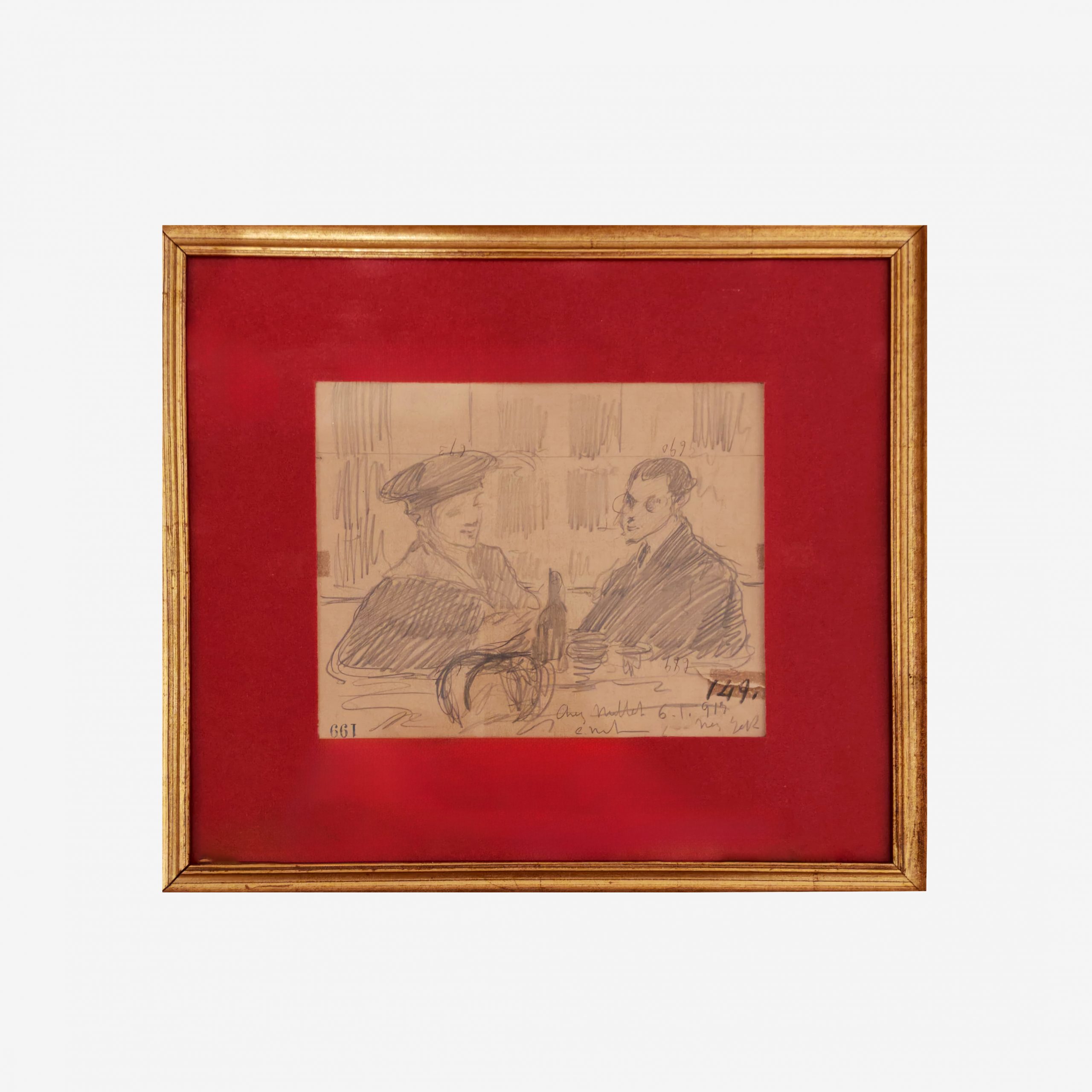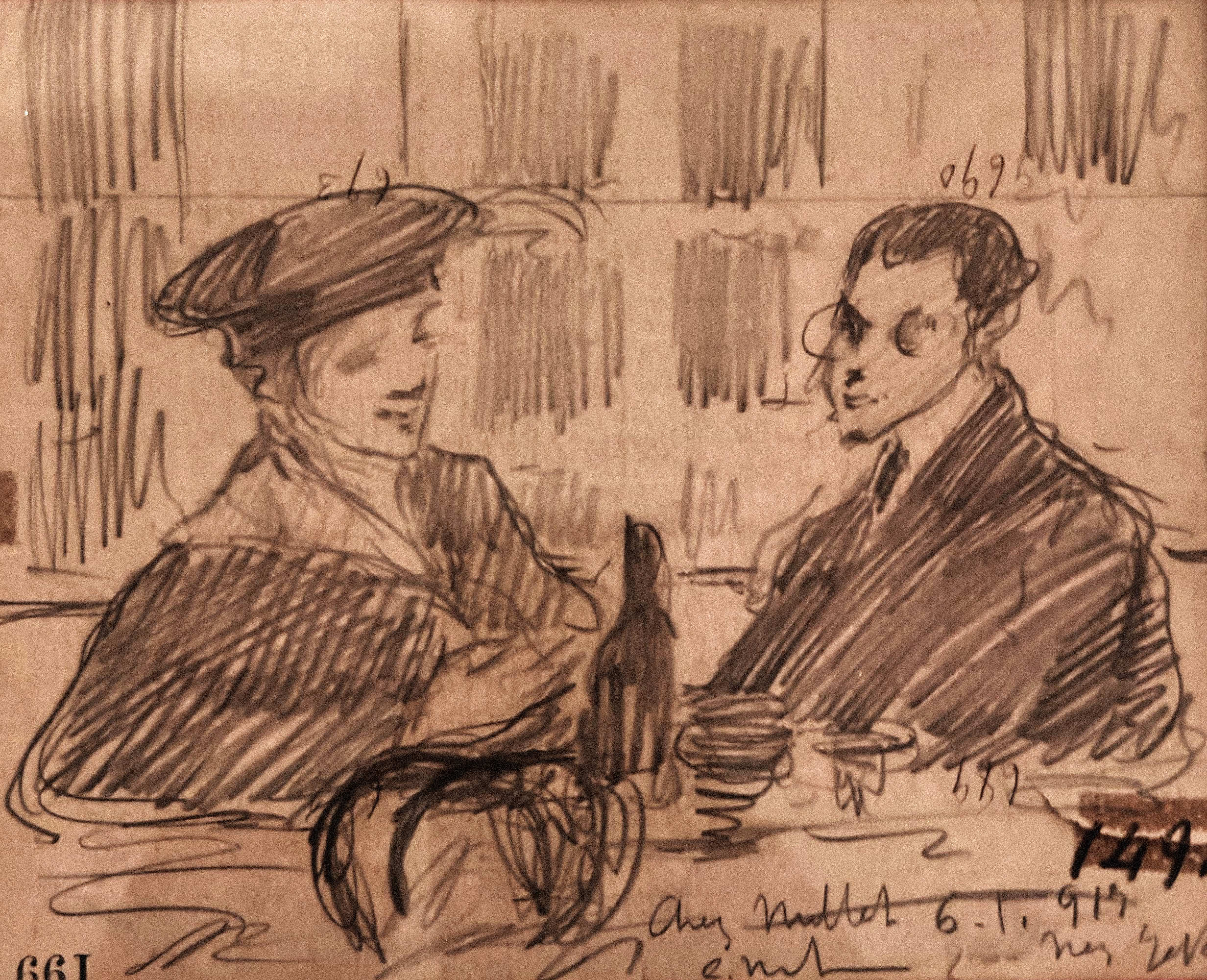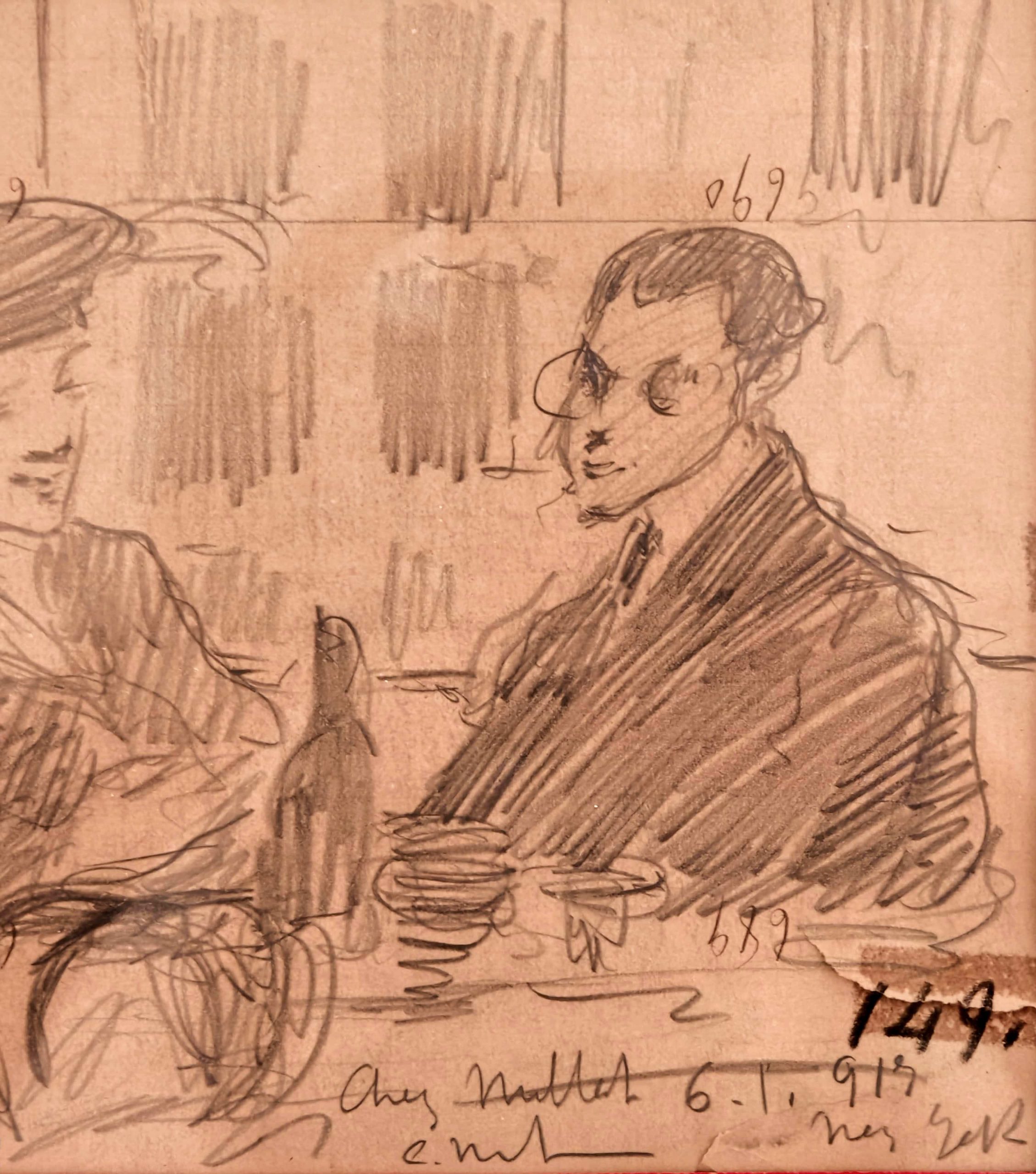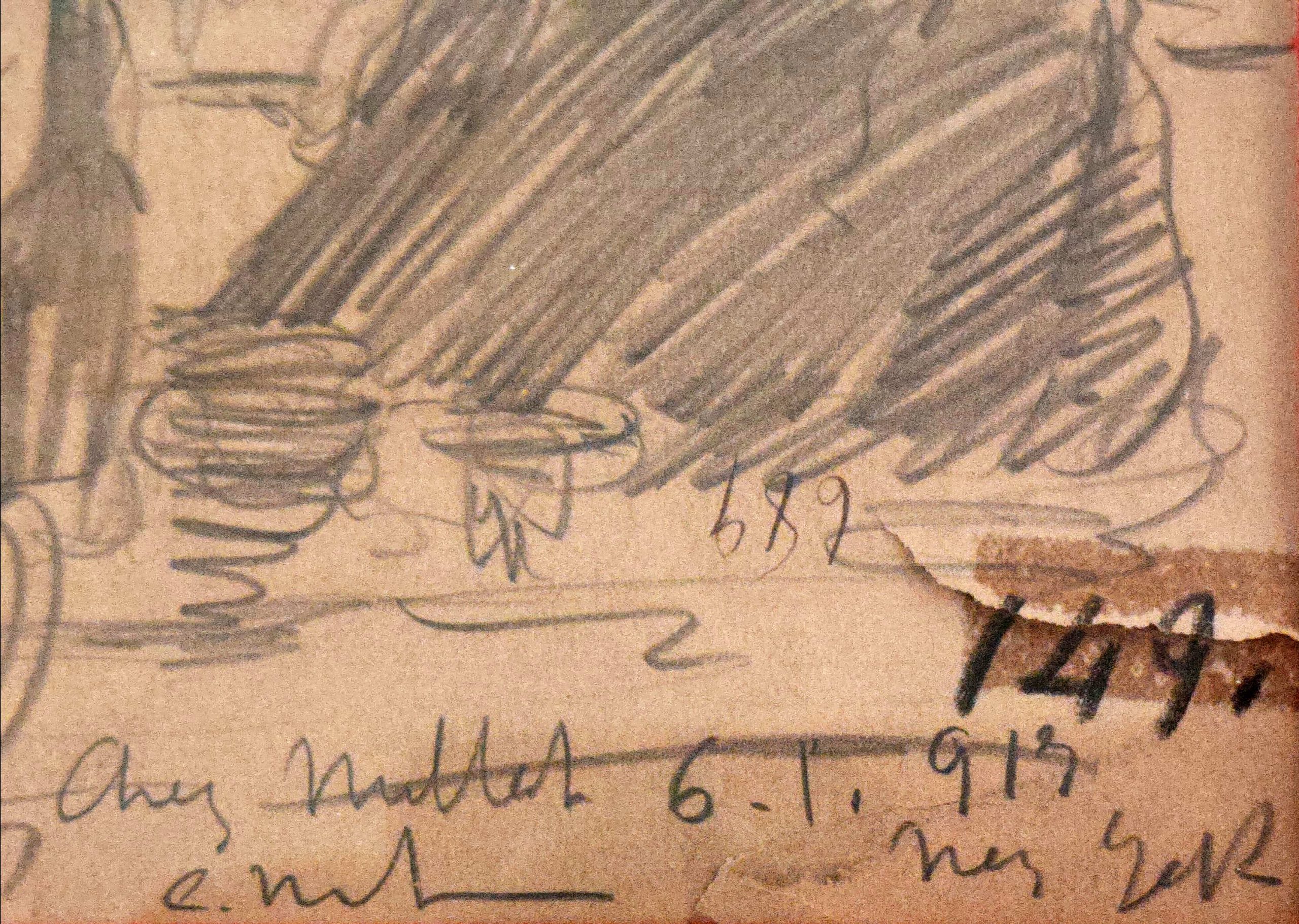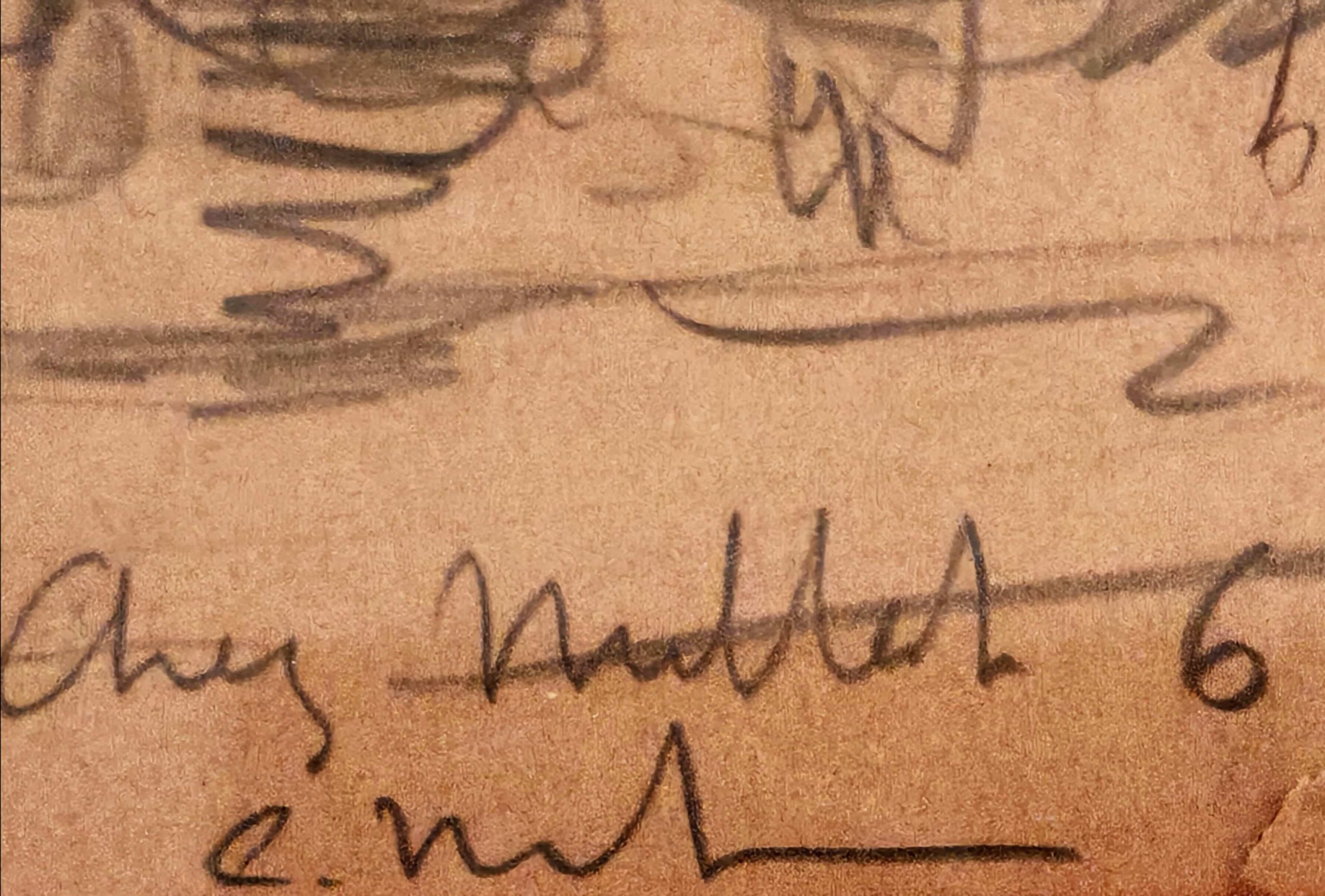This delicate sketch titled “Encuentro” (1917) depicts an intimate and ambiguous scene: two male figures sitting opposite each other at a café or tavern table, conversing while sharing drinks. Executed in graphite on paper, the drawing reveals agile and expressive strokes, where the line plays a key role in capturing the atmosphere of the moment rather than realistic details. The artist, attributed to Eliseo Meifrén Roig, primarily known for his landscape and seascape paintings, surprises here with a more personal and spontaneous style, close to sketches of everyday life.
On the far left, a man wearing a sailor-style beret can be seen, while on the right, another figure, dressed in a suit and tie, leans slightly toward his interlocutor. Between them, the bottle and glasses underline the social nature of the encounter, but also reinforce the intimacy of the scene. The inclined gesture, the suggested glances, and the proximity of the figures invite a reading that goes beyond the merely anecdotal. It is not unreasonable to think that the artist may have subtly insinuated a nuance of emotional proximity or even homoerotic tension, although never explicitly. This ambiguity, precisely, gives the work its interpretive richness: what at first glance appears to be a costumbrist sketch could conceal a deeper narrative about bonds and complicity between men at a time when such expressions barely had a public space.
Formally, the piece is in the tradition of quick sketches typical of the late 19th and early 20th centuries, in the vein of artists such as Toulouse-Lautrec and Steinlen, who captured urban scenes with vibrant, almost improvised strokes. The crosshatching, the barely sketched backgrounds with vertical and horizontal stripes, as well as the economy of resources, reinforce the freshness of the moment captured on paper. The inscribed date, January 6, 1917, also gives it an almost diaristic feel, as if it were a personal memoir or visual testimony of a lived moment.
Compared to other works of the period, this drawing shares affinities with the graphic production of modernist and post-impressionist artists who frequented cafés, cabarets, and male-dominated social spaces, places where the everyday and the intimate intermingled. The choice of graphite on paper also brings it closer to private sketches, rather than pieces conceived for exhibition.
Ultimately, “Encounter” not only documents a social scene but also opens up a space for multiple interpretations: from the representation of urban life in early 20th-century Europe to the barely perceptible but present suggestion of a more complex emotional bond between its protagonists.
